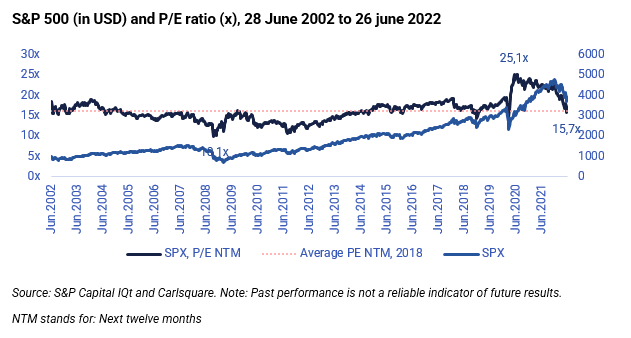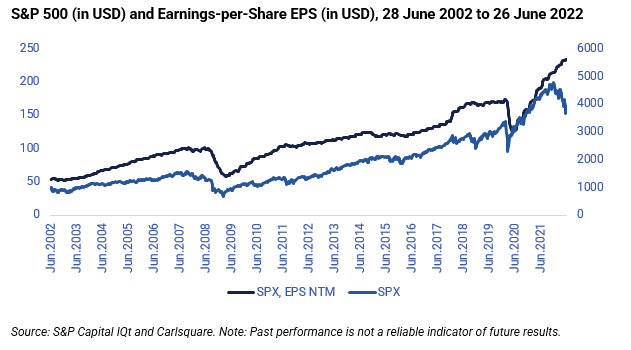What happens to the P in P/E-ratio when the E goes down?

As we all have heard, markets are talking about the risk of a recession. This risk is also being priced in. As can be seen in the chart below, the forward-looking Price/Earnings (P/E-) ratio for S&P 500 (SPX) is currently trading around 15,7x, somewhat below its average since July 2002. It is also clearly down from the top just above 25x in mid-June 2020.
As we all have heard, markets are talking about the risk of a recession. This risk is also being priced in. As can be seen in the chart below, the forward-looking Price/Earnings (P/E) ratio for S&P 500 (SPX) is currently trading around 15,7x, somewhat below its average since July 2002. It is also clearly down from the top just above 25x in mid-June 2020.

Even though the recession risk is clear, equity analysts are still believing in increasing earnings during the next twelve months. See the chart below. But as we’ve learned from history, analysts’ estimates are typically the most incorrect ahead of a recession. This means that earnings estimates need to come down if a recession becomes reality.

So if the E in P/E goes down, the Price (as in S&P 500) must follow. Otherwise, the P/E ratio increase, which is not the typical pattern at the beginning of a recession. If you believe we are getting closer to a recession, one can say that the valuation multiple perspectives indicates that there may be further downside.
The full name for abbreviations used in the previous
text:
EMA 9: 9-day exponential moving average
Fibonacci: There are several Fibonacci lines used in technical analysis.
Fibonacci numbers are a sequence of numbers in which each successive number is
the sum of the two previous numbers.
MA20: 20-day moving average
MA50: 50-day moving average
MA100: 100-day moving average
MA200: 200-day moving average
MACD: Moving average convergence divergence
